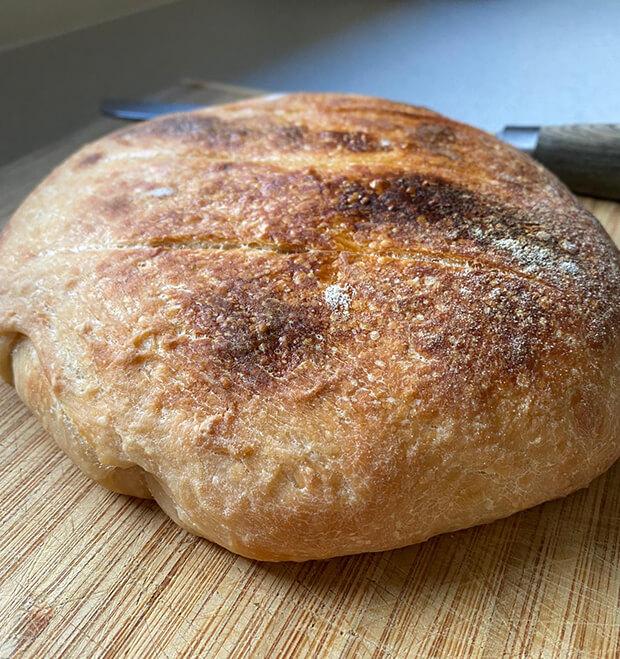4 Key reasons why your sourdough bread is flat
“Everyone has what it takes to make great sourdough.”Making your own sourdough bread is a great privilege. I find it’s cathartic and artistic. It’s a mystery and a science. It can also be a great disappointment. Your much anticipated loaf can look incredible, but when you cut it, ready to eat, you discover that your sourdough bread is flat. It can make you feel flat too. I know. I’ve been there.Can I let you in on something? Behind every perfect Instagram loaf and facebook-famous sourdough post are 5, 15, even 50 sourdough bread fails. Yes. Even for me, and I have been baking and hacking sourdough bread for more than a decade.Relying on wild yeast to rise to each loaf, sourdough bread is a natural yet reasonably predictable process. You just needs to understand how this living, breathing, fermenting wonder works. That’s why you’re here.Sourdough takes longer than yeasted bread and can have a few tender pitfalls. But when you know how to navigate them, making sourdough bread is much tastier, better for you and can be much more flexible than making yeasted bread. Sourdough loaves even look better. But that’s my very biased obsession!!While it will rise, sourdough bread by nature, doesn’t rise as much as bread made with bakers yeast. And knowing what happened, when your beloved sourdough bread comes out flat can be tricky to work out.Fresh from the oven, sometimes it just doesn’t rise ta all. It’s flat and dense, and not the good kind of flat either, not like tortilla flat, no…. ????It’s more like a brick.Or sometimes, a half brick.The top half is semi bread-like but the bottom half… well, it’s like a surfboard.Something went wrong.Every issue with flat sourdough bread will fall into one of these four categories:1. Flour issues2. Exhausted or weak sourdough starter3. Under or over-proofed dough4. Your baking processLet’s go through them one at time. It’s important to understand each one because your bread might be flat this time due to just one, or a combination of them. Next time though, your sourdough bread might be flat might be for a completely different reason.You may like to bookmark this page to refer to as often as you like, as you walk out the magical sourdough journey.Let’s hope though, there won’t be a ‘next time’. ????
Flour issues
Contents
The Number #1 Reason your sourdough bread might be flat is using the wrong flour.Bread flourBread mix, all-purpose flour, self-raising flour or cake flour can produce undesirable results when making sourdough. They are purposed for cakes, slices, muffins, and other cooking. And when it comes to bread, they are only useful for making yeasted bread. Make sure you use flour from our list of recommended bread flours. You should be able to get some at your local supermarket. Otherwise, simply a choose a flour that has 13% protein.KEY TIP: Protein gives the sourdough starter and dough enough strength to rise a loaf of artisan bread without adding yeast. Without this level of protein, you may get a bubbly starter but your loaf will be too relaxed, like a weak muscle, unable to rise your bread.Bodybuilders rely on protein to build their muscles, so do the gluten bonds in sourdough!!Bread mixes don’t require as much protein to be inherent within the flour. They’re designed to be used with bakers yeast and the protein content of the flour is often around 8%. The protein level written on the box is for the entire bread mix, not just the flour. So, sometimes the box may say 13% protein, but that’s not in the flour on its own, it’s including all the add-ins. Seeds can boost the protein count to 13% but seeds don’t feed the sourdough to make it strong enough to rise your bread. The flour does. So it’s the protein content of the flour that matters.
Flour typesSpelt and rye flours have enough protein in the flour to make great sourdough bread, but they naturally produce less rise. This is not a fault but a characteristic of these two flours. You will still get a semi-open crumb and a very likeable sourdough, but if your heart desires a taller loaf, try using 50% wheat flour with 50% rye flour or 50% spelt flour to give a little ‘boost’ to your sourdough.Old flourSometimes flour is not stored correctly or has passed the use-by date. This affects the nutrient activity of the flour causing your sourdough to struggle because there is not enough ‘fresh food’ for it to activate. Try to eliminate all the other possibilities before you throw your flour out. But I suggest buying some fresh flour and seeing if that solves the issue for you.
Exhausted or weak sourdough starter
If you have used fresh, suitable bread flour and your precious loaf of sourdough bread is still flat and dense, the issue may have been with your sourdough starter.Sourdough starter needs to be turned into dough the moment it is has doubled. This is when your starter is at its strongest point, and therefore able to rise a good loaf of bread.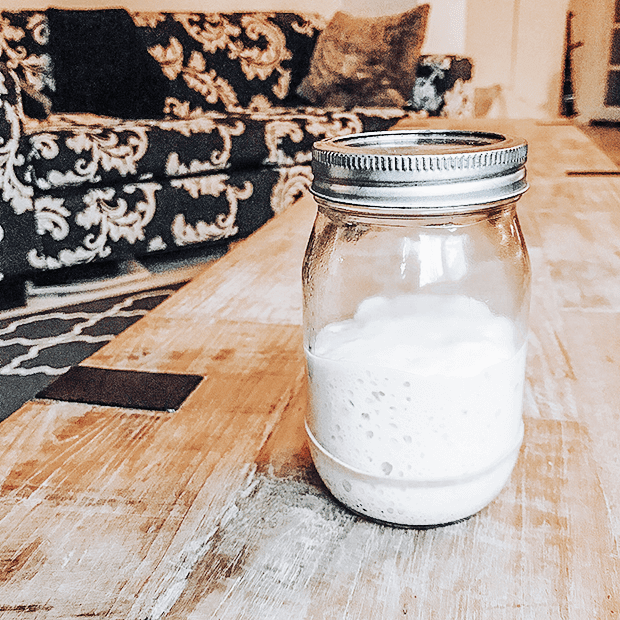
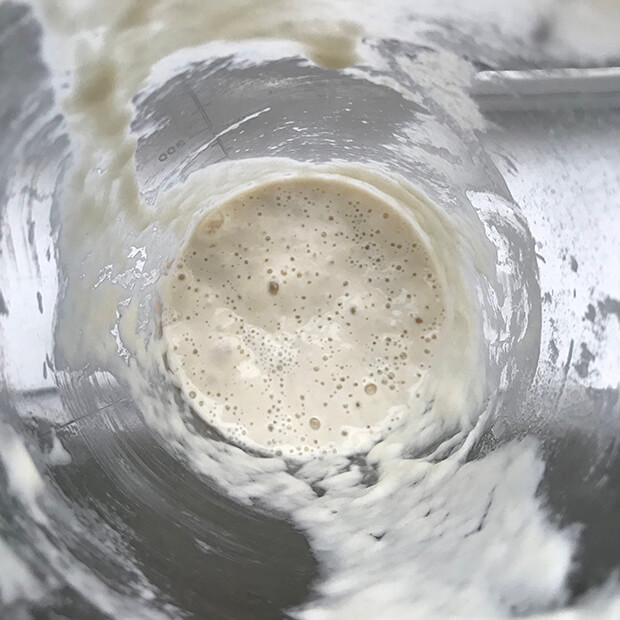
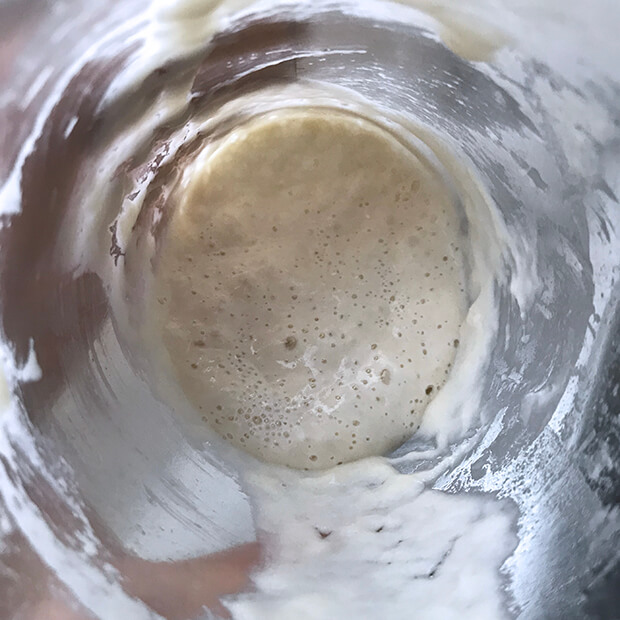
Under or over-proofed dough
You can get the right flour, grow a kickin’ sourdough starter, form a brilliant dough and loose it all in the rising and proofing.Sourdough bread has two rises. The second shorter than the first.Under-proofed sourdough loavesDough that’s not left long enough for either of the two required rises, will result in sourdough bread that’s flat.The length of time for the first rise will usually vary from 4-12 hours.This time range is not a ‘however long it suits you’ suggestion. It’s a ‘however long it suits your dough‘ guide and it depends on whether or not you kneaded your dough and how warm (or cool) your kitchen is at the time.Not allowing the dough to double during the first rise can be one reason your sourdough bread is flat and dense. Not giving it long enough to ripen during the second rise (proof) is another. In both cases ~ your sourdough bread was not mature enough to bake.First rise: You can tell when it’s ready because the dough has doubled or is noticeably a lot bigger compared to when you made it. When you shape an immature dough, you will find it’s not all that puffy, may snap or resist when first being shaped.If you are home during the first rise, you are free to keep an eye on the process, ready to shape your dough once it has doubled. If you are not home or available, you are going to have to know how long it will take to double so that you can make sure you are available when the dough is ready. Your dough won’t work to your time schedule unless you know how to hack time and temperature to make it work for you.Second rise: It is unlikely your loaf will double, but it will puff a little and slightly bounce back when lightly poked. Fast return on your finger’s indent means it’s not yet ready. If it doesn’t bounce back, the opposite has happened ~ the dough has gone past it’s peak and is becoming tired. It may bake well but won’t rise in the oven. For more information and rescue for over-proofed sourdough read How to tell when your sourdough is ready to bake – The Poke Test.When dough is under-proofed, what happened?You may have impatiently cut the time short or worked with a cool kitchen. In both cases, the dough needed to be left longer OR, the temperature of the room needed to be increased. Don’t do both. Warm temperatures shorten rise times, cooler temperatures lengthen them.Your dough was simply not ready to be cooked.Our maintenance-free sourdough uses long rises, because it’s a no-knead and no experience required process. It’s designed to be easy and has inbuilt recommendations for time-frames at various temperatures. The time frames are more flexible sue to the slower process and can be worked readily around working or busy family life. We love sourdough and we want you to love it too. Our aim is to avoid the many pitfalls of making it.Over-proofed doughTo state the obvious, this is the opposite of under-proofing your sourdough.When sourdough reaches it’s optimum growth, it needs to be shaped after the first rise and baked after the second rise. When this doesn’t happen, in both instances, your precious sourdough is exhausted from all it’s growing, and like a tired, hungry 2 year-old, it has has a meltdown. Literally. The internal structure holding all the air pockets and beautiful would-be crumb, begin to collapse.What happened?Your dough was left too long and/or your kitchen environment was warmer than you thought. It grew faster and stronger than you were available to meet it’s need by moving on to the next step. It ran out of fuel waiting and deflated like a balloon. It can sometimes be as simple as not turning on the oven in time so that its ready when your bread is.If you are proofing at room temperature, turn your oven on after you shape your dough, not when the dough is ready to bake.What it looks like:First rise: When you do move on to the next step, shaping your sourdough loaf, the dough doesn’t hold its shape. It’s slack and wetter than expected. It may even be glossy and wet looking.
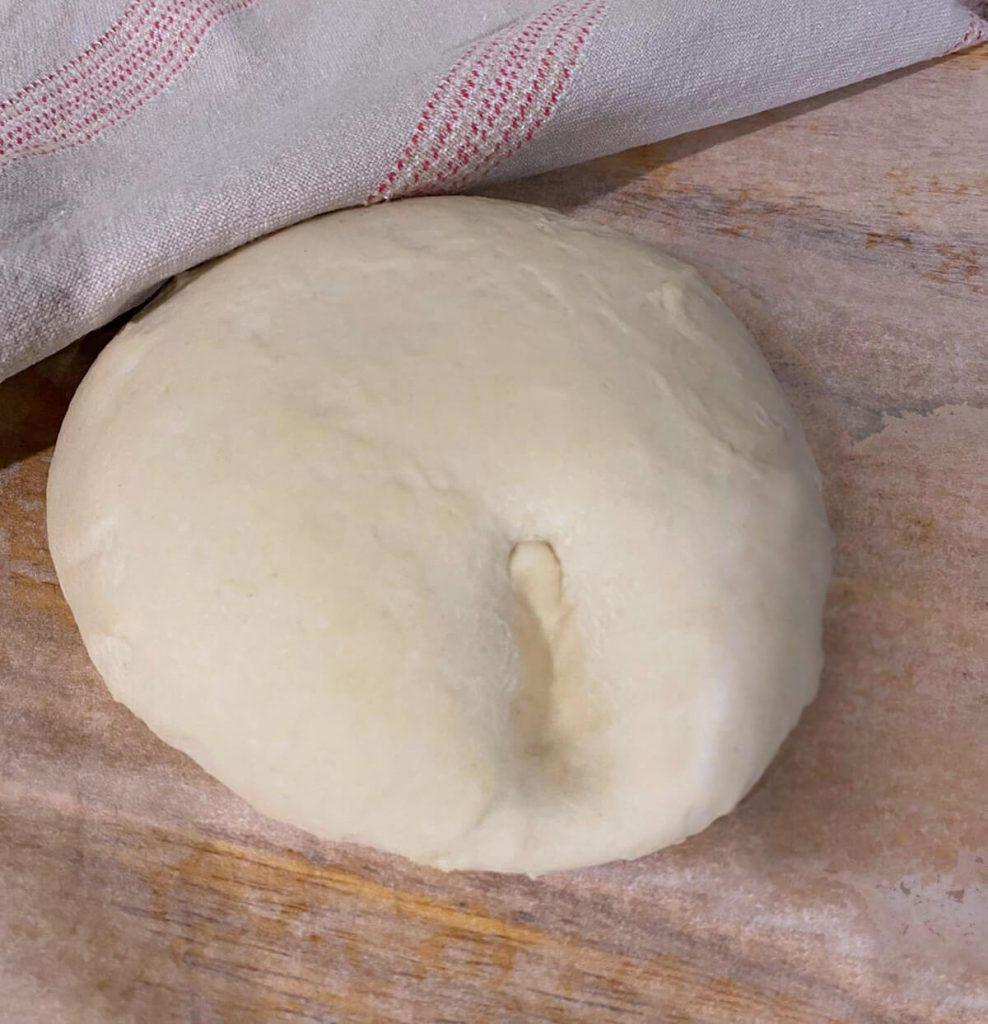
Your baking process
Loose shapingConverse to natural logic, your dough likes to be tightly shaped so it can burst when its in the oven. Think of it like a strong, tense leg muscles launching you into the air with a jump vs weak, lazy, floppy muscles. You won’t get the same height. Your sourdough bread is the same. It gets height when its tight and strong. When you do your Pull & Stretch its like wrapping a present tightly. Lift the edge of the dough towards the ceiling and fold down into the middle. Repeat, overlapping the last fold. Do this 12-14 times or until your dough is tight and its difficult to do this anymore. Then do 1-2 more!Baking method or inexperienceWhile baking inexperience won’t produced dense, flat sourdough, it can affect how much your loaf rises. Simple hacks like covering your loaf with a large cake tin or adding a tray of boiling water your oven can improve both the colour an the size of your loaf.For specific tips,based on your method of baking see:Baking your sourdough bread using a Dutch oven or casserole dishBaking your sourdough bread using a pizza stoneFaking it – Baking your sourdough without a dutch oven or pizza stone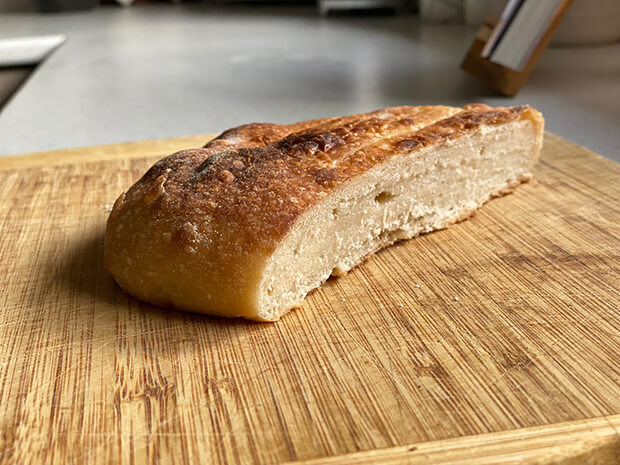
Last, Wallx.net sent you details about the topic “4 Key reasons why your sourdough bread is flat❤️️”.Hope with useful information that the article “4 Key reasons why your sourdough bread is flat” It will help readers to be more interested in “4 Key reasons why your sourdough bread is flat [ ❤️️❤️️ ]”.
Posts “4 Key reasons why your sourdough bread is flat” posted by on 2021-08-12 23:02:08. Thank you for reading the article at wallx.net
